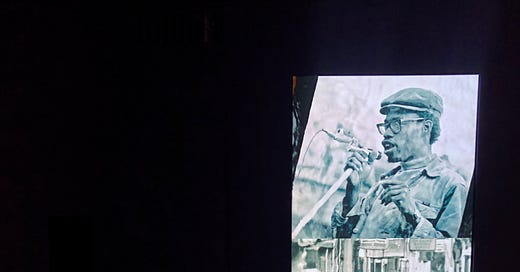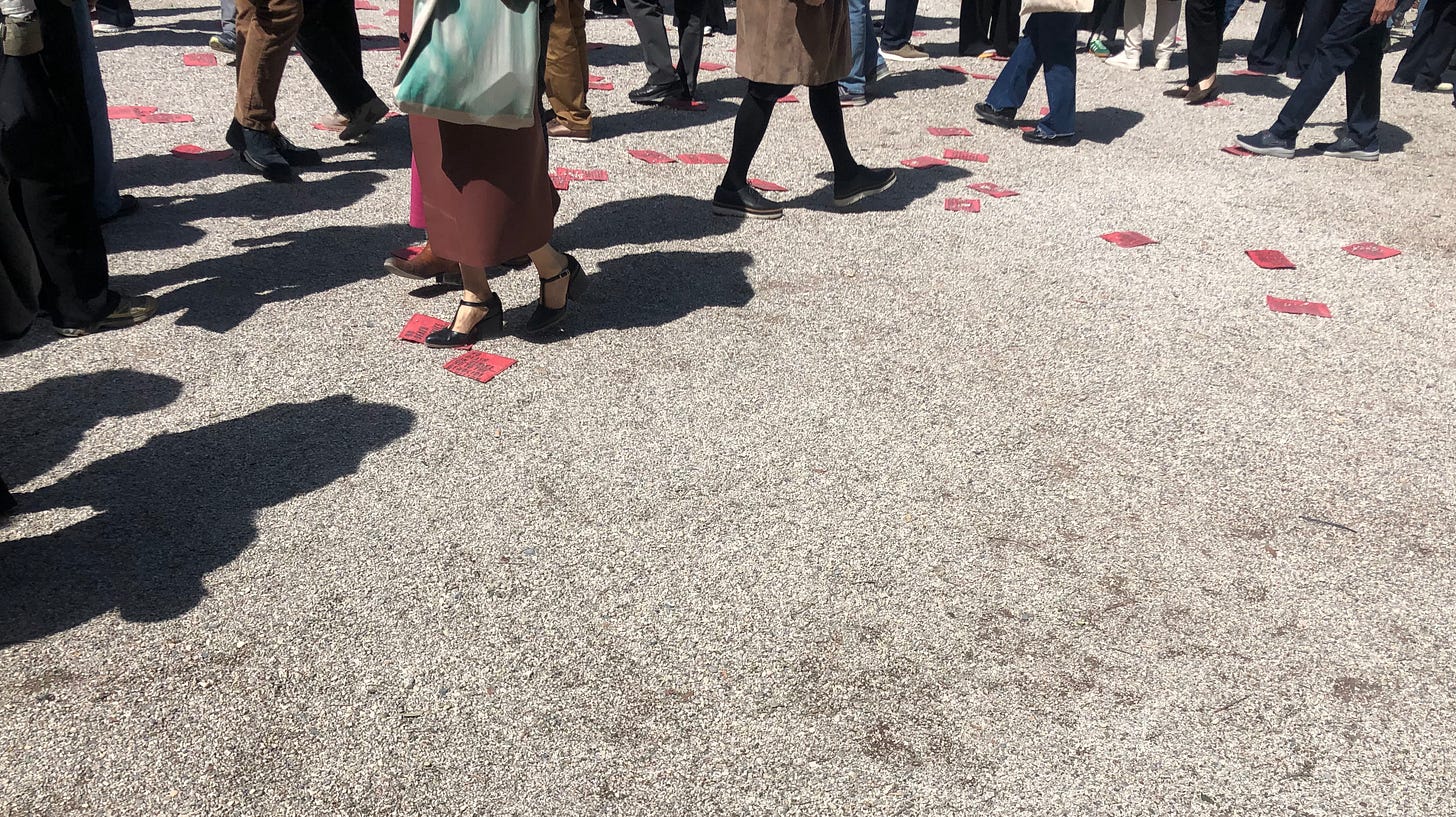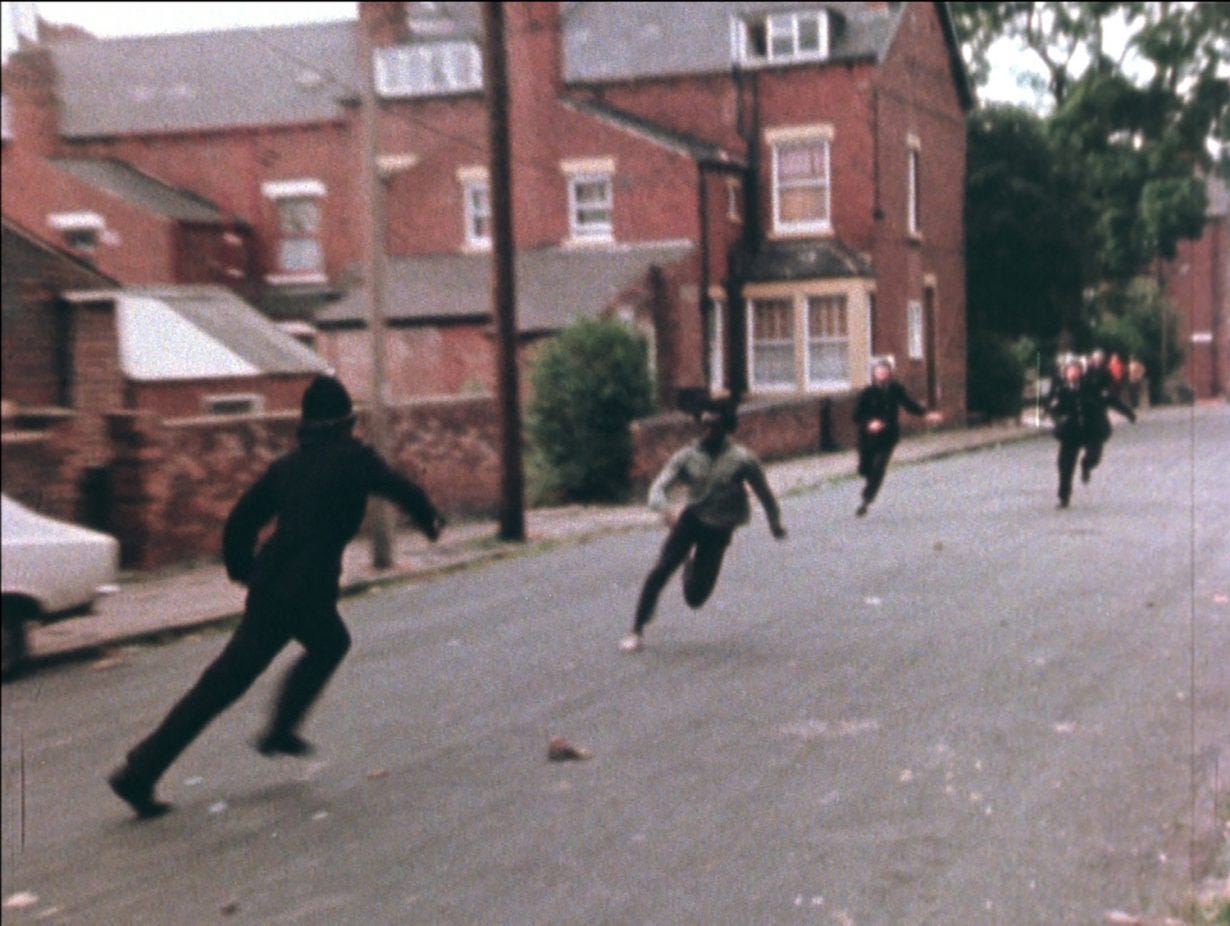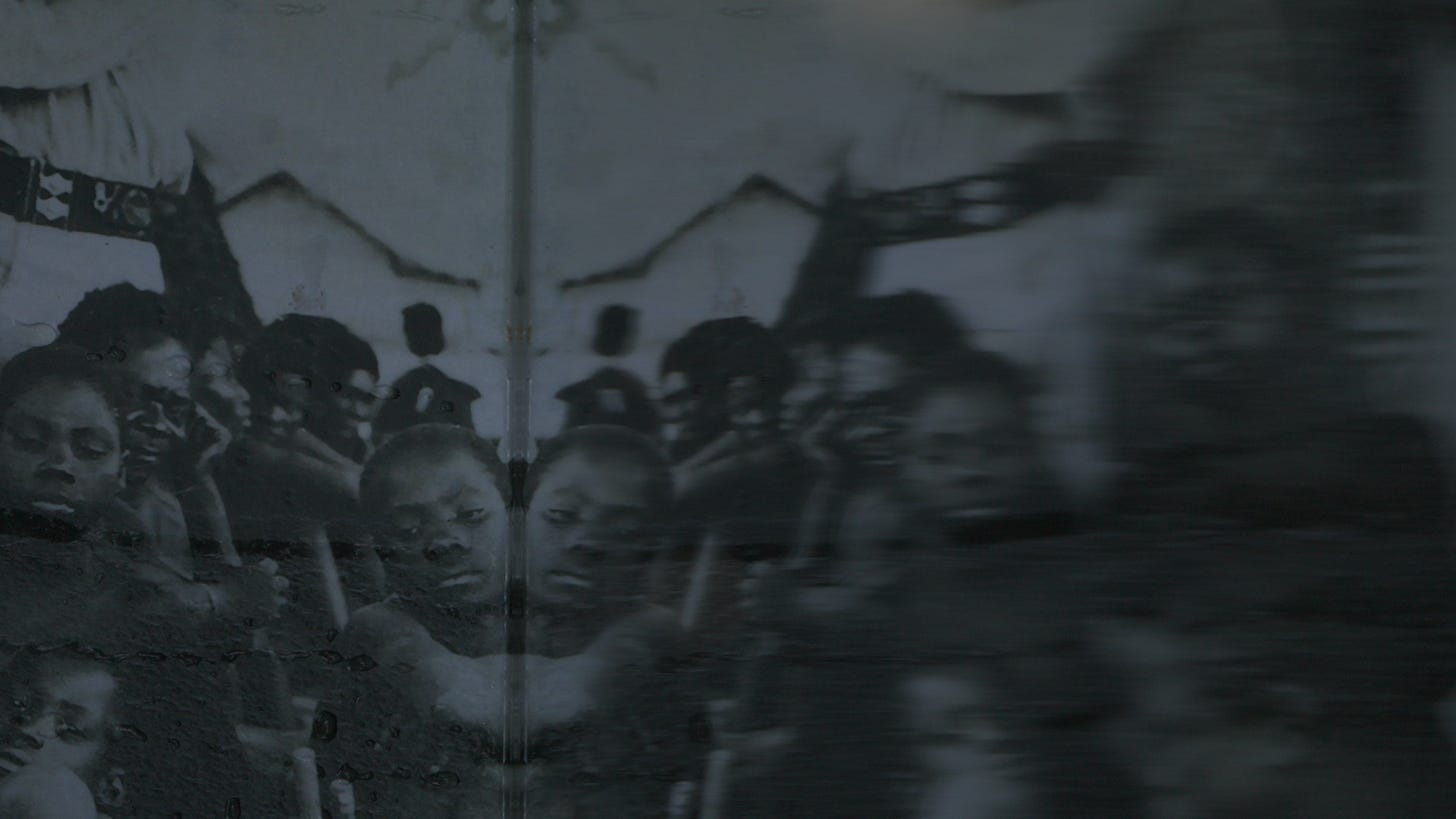In conversation with Tarini Malik
Dale Berning Sawa talks with the Curator of John Akomfrah’s 'Listening All Night to the Rain'
Before being named the Shane Akeroyd Associate Curator of the British Pavilion for 60th Venice Biennale, in June 2023, Tarini Malik, a London-based writer and curator, had held posts at the Whitechapel Gallery, Frieze Projects and Serpentine Galleries. The 10 months that followed her accession to this major post were, as comes through with tangible passion in this interview, an exhilarating journey.
John Akomfrah, the artist chosen to represent the UK for this international art exhibition, had long been a shining star in Malik’s curatorial universe. The work they scaffolded together — Listening All Night to the Rain — speaks to a true meeting of minds.
We spoke under strict time pressures, on the day of the official opening, standing under the portico of the British Pavilion. This grand neo-classical structure looks out on to one of the main tree-lined paths in the Giardini, in a grouping that includes the French, the German and the Canadian pavilions. As we starting recording, a pro-Palestine protest made its way up the path. After a few minutes of us both trying, valiantly, to honour this professional commitment, I paused the interview. Malik was visibly moved by the protest. We then carried on afterwards.
Dale Berning Sawa: Listening All Night to the Rain is an overwhelming piece, a metaphorical flood as well as an actual flood of images and feelings and sounds. Can you talk to me about the initial conception of the project? Were water and memory there right from the start?
Tarini Malik: Water and memory have always figured in John's practice. When he was first invited into this project, and when I was invited to collaborate with him, the thing that we were most interested in was, how do we approach this space? It comes with so much history, so much complicated history, in terms of the power and the visibility and the agency Britain has in the Giardini. The Giardini is actually a very inequitable space, when you think about other countries, but also the complexities around nationhood and identity and belonging and what it means to represent a country.
DBS: We are standing on the steps of the British Pavilion. At the foot of the steps, a pro-Palestine protest is being held. This is such a space of power. Just landing in Venice and going through security, you're immediately confronted with the people who have EU passports and the people who don't and the disproportionate questions they have to answer at immigration. What sorts of tensions did doing this particular work in this particular context bring up? And how did you navigate them.
TM: John's work deals with ideas of diaspora. They are an extension of who he is. We are aware— painfully aware— of the elitism of a biennale context and also of the privilege of a biennale context. It may be big and may be global. But it is not inclusive to all.
One of the incredible things about film as a medium — and this is why John came to it initially — is that it can exist in many different ways, online, on social media, in ideas, even in literature. We've tried to build an exhibition that can travel, that can come apart, that can be recontextualised in different moments, and also exist online. We've also tried to build a public programme, both in London and in Venice, online and in different parts of the world, that people who don't have the privilege to be able to come to Venice can access. We're working on a book, that will further expand the reach of the show.
For me, the arts weren't always an accessible place. It was the work of people like John in the 80s that really paved the way. We really hope that, in this incredibly ambitious, unapologetic project, people will resonate with certain things that they'll be able to take away. You don't have to access everything, for the message to be resonant.
DBS: How did the architecture shape the work and what surprised you about working with John?
TM: This project is a culmination of the last four decades of John's practice, but it also marks a turning point. What has really surprised me is the ways in which John is so fluid in how he approaches his narrative structure. This is a complicated architecture. We've really tried to play with scale and architecture. Even though there is an epicness, or a monumentalism, to the work, it is able to be incredibly intimate and personal and subjective as well.
No single person will see the same thing, at the same time. You have 62 screens throughout the show, each of which has a half-hour running time. Each is thus showing different images at different points in time.
We've thought about sight lines and vantage points. You can see the façade of the British Pavilion all the way kind of up and down the Giardini. By making an intervention on the facade of the building, we were saying, 'We're here'. It was a way to acknowledge or pay respect to voices in the global south, and the problematics around race and identity that Britain brings forward— the legacies of imperialism.
For the second time in the British Pavilion's history, we have used the basement of the building. We have taken up more space than has ever been taken up in history. That is very purposeful. Britain is incredibly, incredibly privileged to have a permanent space here in the Giardini. Not every country has that.
DBS: I'm so interested in what you've just said about taking up more space than ever, for the first time in history. It chimes with the way John himself will talk about collage or colours or any other formal point in terms of ideas. There is no separation.
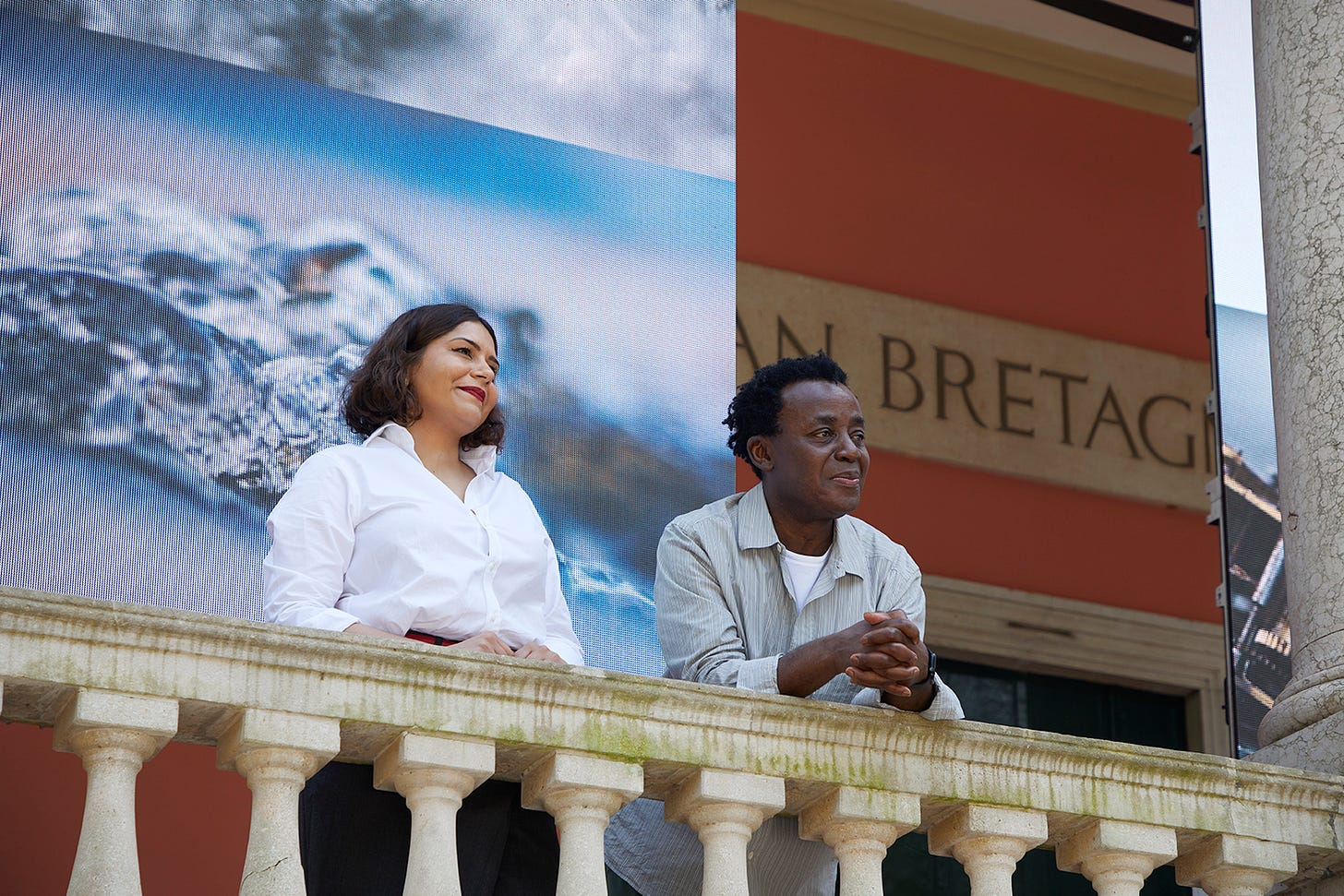
TM: Without sounding like an adoring fan, which I absolutely am, I still am just completely blown away with the depth in which John thinks and the connections that he makes. He draws from not only art history, or the history of cinema, but also science, literature, environmental studies, philosophy, semiotics. The show is packed with hundreds of references. If one or two things resonate, if you see the the work of Gaston Bachelard or you know the work of Ezra Pound, or you understand the significance of water in Ghanaian religion, that's a wonderful thing. But it also doesn't really matter. The idea is to kind of create poetic and subjective connections.
DBS: How has working with John informed your ideas of how you engage with people?
TM: It's really inspiring to work with an artist who is so unapologetically himself and is so committed to what he does. We somewhat take for granted that moving image is accepted as an art form. But you have to remember, John started in the 1980s, at a time of rioting and enormous economic and racial injustice— which is still very much present today. He really, really pushed for visibility of people of colour. So the tools that I've got most from working with John is just more fuel to the fire really.
He never makes you feel alone. His work draws you in, he makes you feel seen, he makes you feel heard. Sometimes we all need a reminder of that, because the work is very much ongoing. This is a very difficult time for art. It's a really complicated time, politically. There is conflict and genocide and terrible, terrible things happening around the world, things that have been happening throughout history. And art has a really important role in that. John has given me that kick that I need. I'm very grateful for it.
DBS: I was thinking about how much the art world can tend to come up with ideas. We're going to do this because it's politically expedient or because there are themes in the zeitgeist to which we must respond. But with an artist like John, it's not that his work is about those things. It is those things. There's such power to that. It's not trendy, it's not jumping on any bandwagon. He's been doing this -- for decades.
TM: That's very, very well put. Around the Giardiani and the Biennale, what is quite beautiful and moving to see is how interconnected many of these artists' practices are. This speaks to where we are in this moment, it speaks to humanity in a fractured world, and complicated positions of various governments, inequity, all of these different things… But John has been doing John, for 40 years. The things he spoke about in Handsworth Songs, which is currently showing in the main biennale, as part of the archival section, are inextricably linked to Listening All Night to the Rain. The gestures may be different, the approach might be varied or more expansive, but the questions are still the same.
DBS: I really loved what John has said about how this piece being about memory, and suggesting paths not taken because we weren't listening.
TM: We didn't want to create a sequence of boxes that make people feel enclosed. Instead, we wanted to embrace the bleed between the different installations of different spaces. The sonic quality of the show mirrors the linguistic structure of the films— it is bricolage, it is archival, it fuses and melts together many, many different kinds of sonic styles, from speeches to popular music and devotional music, each of which has a multilayered sense of history and geopolitics.
DBS: And place? I mean, on an image, you can cut something out, but with sound, you can't do that. It always captures where you really are. Walking in the installation yesterday, the storm happened and I was watching people walking in the water on screen and and hearing rain on the roof above my head. Now we're in the garden, we're hearing the sounds of this protest, which link directly to the sounds of protest in John's work itself. A lot of art can seem so elitist. Sound has the ability to transcend that.
TM: You know that phrase people use, when they say, art knows no language, or it knows no boundaries? That's really not true. At all. I wish we could be that idealistic in life. But we know that that's not true.
The thing is about sound is that it carries, and we process it in a different way. This is supposed to be a biennale which recognises where we are as a global society at a point in history. So where we are is essentially categorised by what we choose to hear. And what we choose not to hear. How we develop as a community or as individuals is based on a set of fluctuations in terms of how we respond to the environment around us.
So this idea of listening, as you say, is crucial. One of the core questions of the work is climate colonialism. We're here in Venice, the precarity of the city is not lost on us. We're surrounded by water, in a place which has an inherent fragility to it.
DBS: And these are also the waters in which so many have died trying to come here. If you talk about Fortress Europe, this is one of the doorways.
TM: Absolutely, this idea of the shoreline and how people travel and traverse water in hopes of finding a better life or refuge or safety. That's been a concern of John's all the way back to his Black Audio Film Collective days, if you think of works like Science of Empire. This imagery of boats and the shipwreck features a lot in the work. People trying to find refuge is really core to understanding this work actually.
DBS: Does John's work gives you hope.
TM: I think it does. That's a really lovely question, so thank you for asking that. The work allows us to confront our past so that we can possibly look to a more compassionate future. When you are asked to look at images of different brutalities— of bombing in Vietnam or police brutality in the UK in the 80s — they are difficult, challenging things. But they make us also realise our shared humanity, the things that we have done to our world and to one another. Once you recognise something, it's the first step in like building some kind of compassion or empathy for your community, for the people around you.

